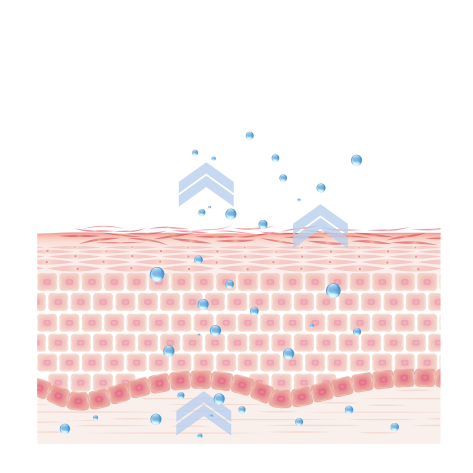- Your skin
-
Our products
Do you know well atopic dermatitis ?
DEXERYL supports you and take care of your dry skin each day
-
CLINICAL RESULTS
- About dexeryl

Rough or tight skin after a shower or in winter... Almost everyone has experienced this discomfort at least once in their life and has concluded that they have dry skin... But this is not necessarily the case... It may be dehydrated... What are the characteristics of dry skin? And what about dehydrated skin? How do you take care of the latter?

Summary
Dry skin, known as xerosis in medical terms, is a type of skin that, clinically, manifests itself as rough skin, that feels coarse to the touch. It is accompanied bydiscomfort, tightness and sometimes even itching1. It is, therefore, a skin type in the same way as oily or combination skin. It is a permanent state.

Dry skin is explained by a change in the physiological characteristics of the structure of the superficial layer of the epidermis, the stratum corneum2. These changes include a decrease in the production of the lipids that make up the hydrolipidic film. The latter limits the elimination of water contained in the dermis and, therefore, maintains the skin's hydration1. For more information on dry skin, its causes, its treatment, etc. you can consult our page on xerosis.

Dry skin requires specific care and, in particular, the use of ultra-rich cleansing products and the daily application of an emollient, which helps restore the skin's barrier function. You can find all our tips for caring for dry skin on our xerosis page3.
Dehydrated skin is a condition that occurs when there is a lack of water in the skin. This can happen to anyone, regardless of skin type: people with oily or combination skin can also suffer from skin dehydration4. It is, therefore, not a skin type but a skin condition, which is transient.

It is important to know that the dermis, the middle layer of the skin (located between the epidermis and the hypodermis) is composed of more than 70% water5. The epidermis feeds from the dermis, drawing nutrients from the blood to generate new cells. When the dermis does not contain enough water, its connective tissue including collagen and elastin can no longer fulfil its function of structure and volume of the skin. A dehydrated dermal layer leads to reversibly dull skin6.
Dehydrated skin, therefore, looks dull, lacklustre and can also show premature signs of ageing, such as surface wrinkles and loss of elasticity. Dark circles around the eyes are often more pronounced3. The skin can also feel tight in localised areas.
Unlike dry skin, skin dehydration can be treated by lifestyle changes. The first step is to make sure you drink enough during the day. You should drink 1. 5 L of water per day 3.
Depending on individual circumstances, you should also combat the factors mentioned above3 :
DEXERYL provides patients with proven clinical studies.

The basis for treating xerosis is, above all, moisturising the skin and appropriate hygiene.
DEXERYL supports you with emollient skin care and cleansers specially formulated for dry skin and recommended for treating signs of skin dryness (xerosis).

DEXERYL Emollient Cream can be used to protect the skin and treat the signs and symptoms of dry skin:
Discover the DEXERYL range
Sources: